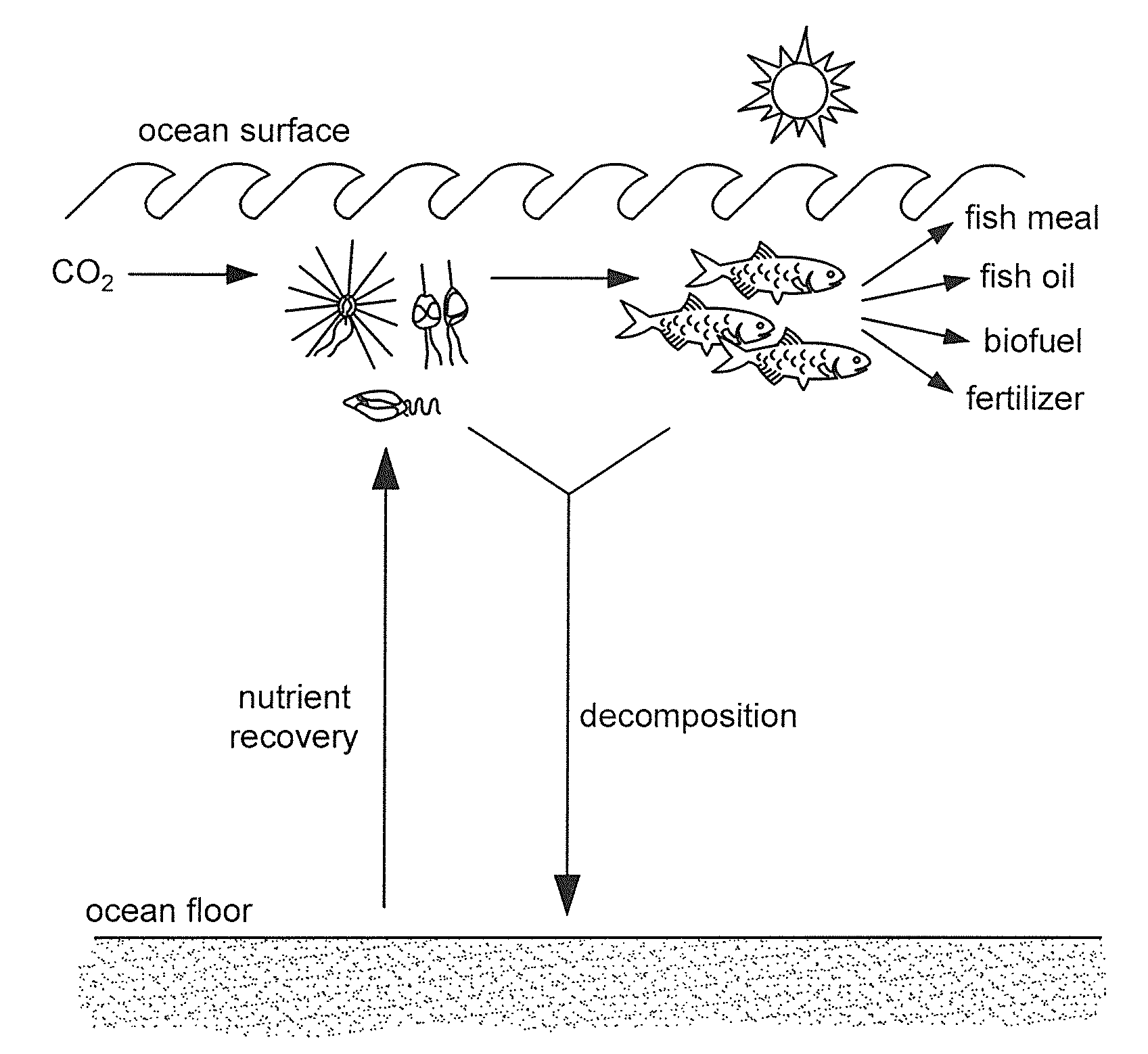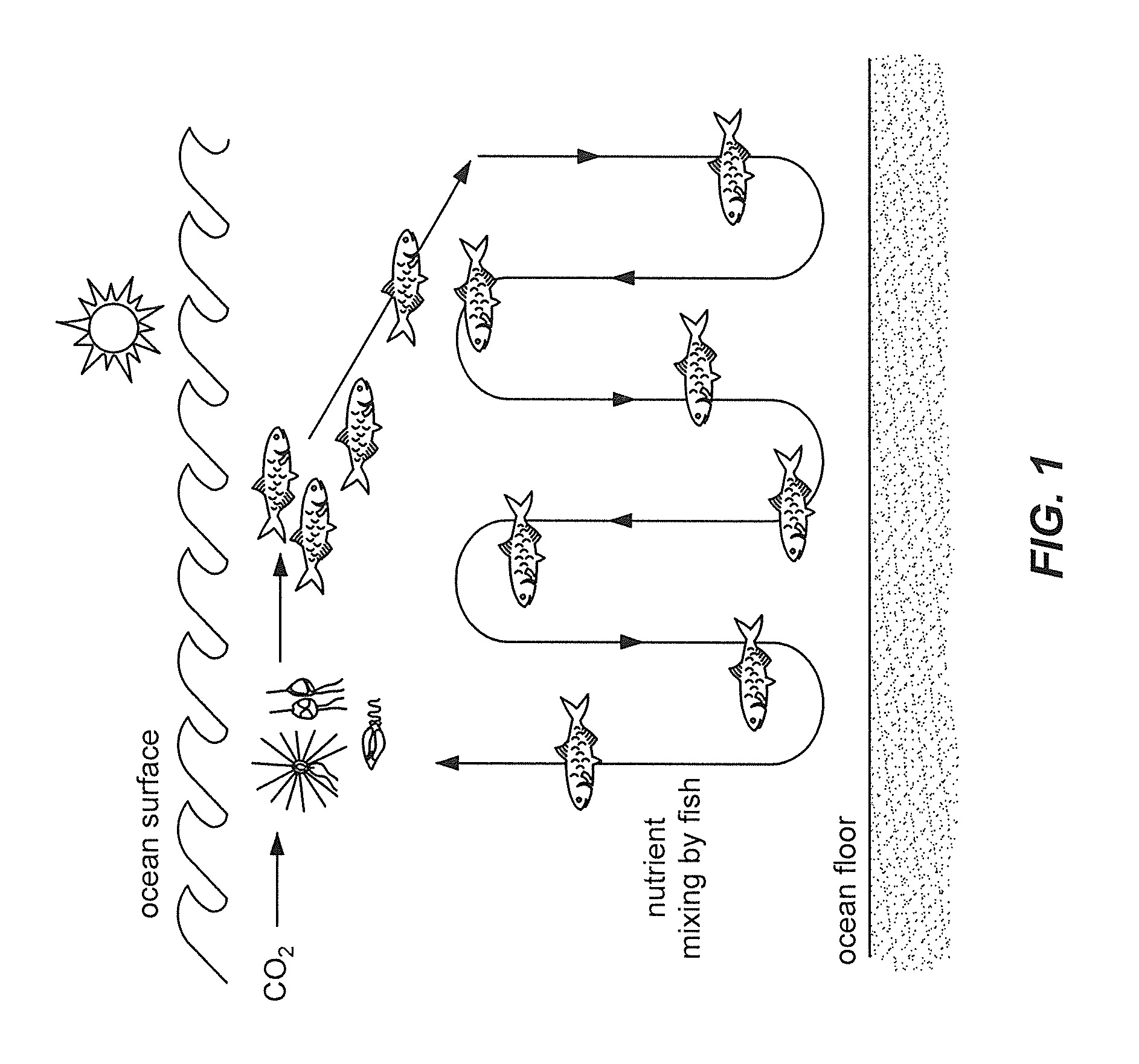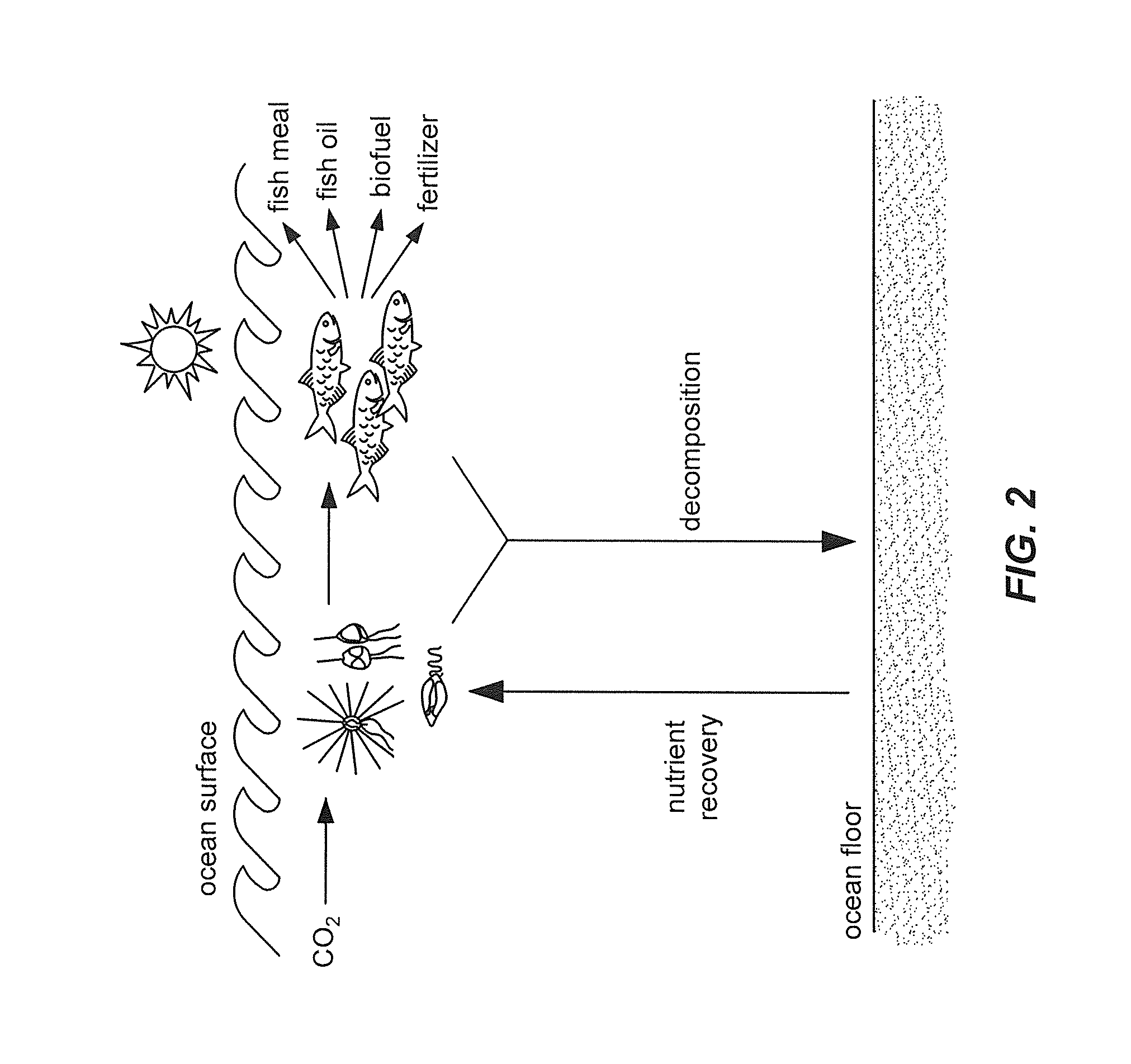Deep water nutrient recovery system
a nutrient recovery and deep water technology, applied in pisciculture, climate change adaptation, applications, etc., can solve the problems of coral reef damage, increased difficulty in ocean water absorbing cosub>2, and further global climate change, so as to increase the population of fish in the ocean, promote further uptake of atmospheric co2, and reduce the concentration of co2
- Summary
- Abstract
- Description
- Claims
- Application Information
AI Technical Summary
Benefits of technology
Problems solved by technology
Method used
Image
Examples
Embodiment Construction
5.1 Method of Mixing of Carbon Dioxide and / or Nutrients in an Ocean
[0027]In one aspect, provided herein is a controlled method for mixing of carbon dioxide (CO2) and / or nutrients in an ocean. In certain embodiments, the method comprises the steps of: (i) providing an upwelling of a source of water in the ocean; (ii) culturing algae in the upwelled water; and (iii) feeding the algae to fish. In certain embodiments, the source of water is nutrient-rich. See, e.g., FIG. 1. In certain embodiments, the feeding of algae to the fish increases the population of the fish in the ocean. See, e.g., FIG. 1. In certain embodiments, the increase in the population of the fish in the ocean contributes to the mixing of the CO2 and / or other nutrients in the ocean. See, e.g., FIG. 1. Without intending to be bound by any particular theory, it is believed that an increase in the population of fish in the ocean will contribute to the mixing of the CO2 from the surface of the ocean to the lower depths of t...
PUM
 Login to View More
Login to View More Abstract
Description
Claims
Application Information
 Login to View More
Login to View More - R&D
- Intellectual Property
- Life Sciences
- Materials
- Tech Scout
- Unparalleled Data Quality
- Higher Quality Content
- 60% Fewer Hallucinations
Browse by: Latest US Patents, China's latest patents, Technical Efficacy Thesaurus, Application Domain, Technology Topic, Popular Technical Reports.
© 2025 PatSnap. All rights reserved.Legal|Privacy policy|Modern Slavery Act Transparency Statement|Sitemap|About US| Contact US: help@patsnap.com



